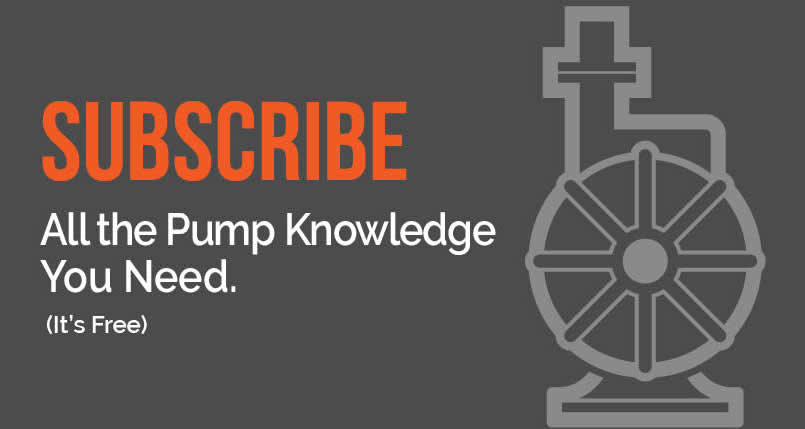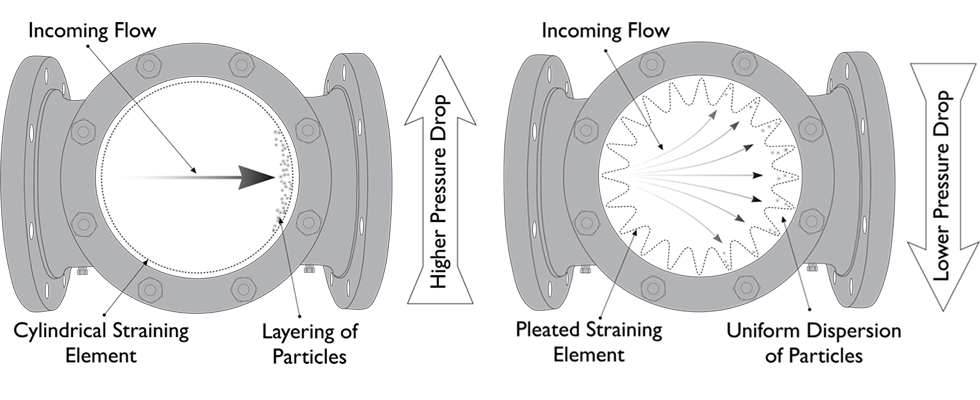
Industrial wastewater systems are essential for manufacturing and production due to environmental, operational and regulatory considerations. These systems are crucial for safely managing and discharging water contaminated with solids, chemicals and other substances related to the process. Several methods are used to treat wastewater, and the specific process or combination of methods depends on the industry and type of byproducts.
One often-overlooked component in these systems is the strainer. Although simple in design, strainers play a vital role. They protect pumps, valves, heat exchangers and downstream equipment from clogging and damage due to solid particles and other debris. Strainers are an inexpensive form of insurance to protect expensive equipment.
When strainers become clogged, they put the system’s efficiency and reliability at serious risk. A common issue in wastewater treatment and industrial applications is clogged strainers, which, if left unresolved, can lead to system efficiency losses, equipment failures, downtime, increased maintenance costs and even regulatory compliance issues.
This article examines the primary causes of strainer clogging, outlines a step-by-step method for diagnosing the issue, and offers practical strategies to prevent it.
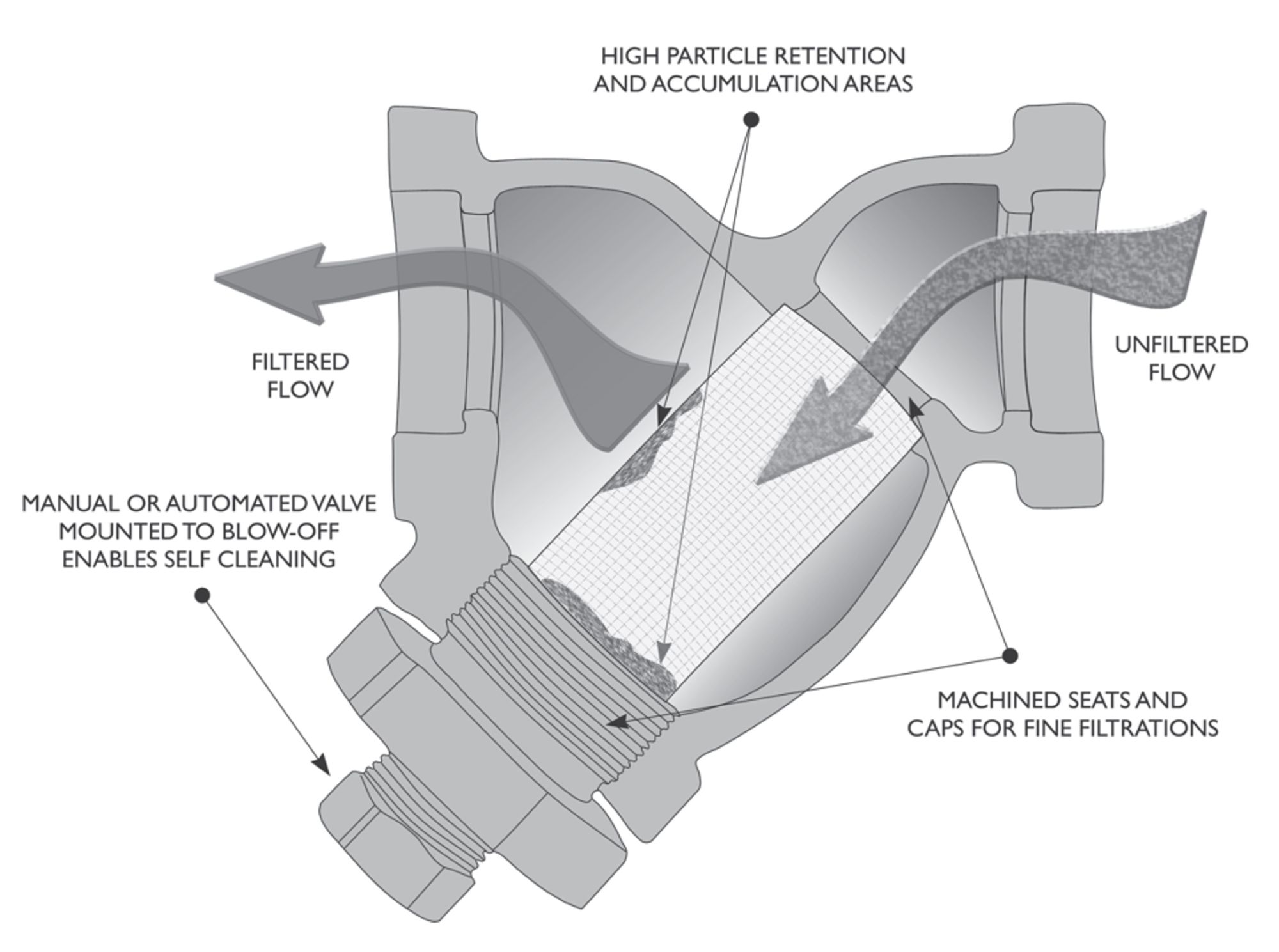
Types of Strainers & Their Functions
An official definition of “strainer” adopted by the Fluid Control Institute is “a closed vessel with a cleanable screen element designed to remove and retain foreign particles down to 0.001-inch diameter from various flowing fluids.”
Strainers are devices used in piping systems to filter out unwanted debris and solid particles from a liquid, gas or steam flow. They usually have a perforated or wire mesh element that traps these particles, allowing the cleaned fluid to pass through. Various types of strainers are used throughout a system at different stages, depending on the application. These include temporary or cone strainers, perforated plate strainers, Y-strainers, basket strainers, duplex strainers, T-strainers and automatic or self-cleaning strainers. The choice of mesh size, strainer material and design depends on the process requirements, the type of solids, the flow rate and the cleaning methods. Selecting the correct type of strainer is essential for maintaining the system’s longevity and optimal performance.
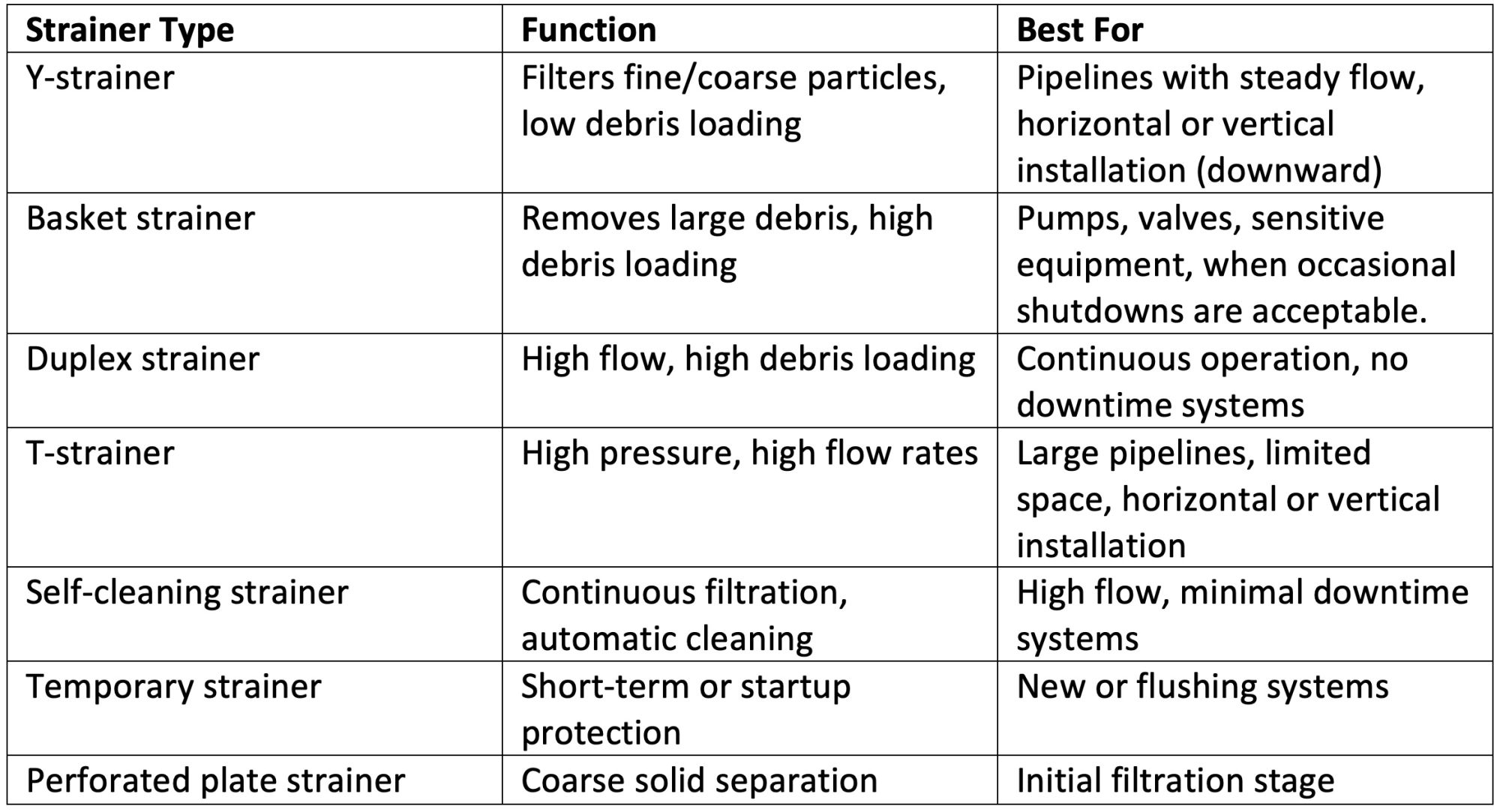
Common Causes for Clogged Strainers
To troubleshoot, one must first understand why strainers clog. Factors include:
- Improper mesh size or basket type: In high-solids environments, choosing a fine-mesh element can lead to rapid clogging, whereas selecting an element with larger perforated openings can allow debris to pass through. For example, a 325 mesh in a system with heavy sludge may clog daily, while a screen with larger openings might offer better performance. In general, screen openings should be approximately one-half the diameter of the largest allowable particle. The largest permissible particle is defined as the size of a particle that can pass through downstream equipment without causing damage.
- High solids loading: Processes such as food processing, chemical production and pulp and paper manufacturing often release high amounts of particulates and suspended solids. These materials can overburden strainers that are not designed to handle such heavy loads. When installing strainers, it is sometimes advisable to use two of them in tandem, especially when dealing with high solids loads and particles that vary in size. By using two strainers in series, the first with a larger opening to trap larger particles and the second with a finer mesh, the load is spread out, and the time between cleanings is also extended.
- Inadequate maintenance routines: Strainers need regular cleaning. In manual systems, users must remove and clean the baskets at set intervals, not just when they become clogged, to prevent damage from excessive differential pressure. If users do not maintain strainers consistently, debris will build up and block the flow.
- Biofouling and chemical scaling: Organic material in wastewater promotes biofilm formation on strainer surfaces, thereby reducing the effective open area available for flow. Additionally, chemical scaling from high total dissolved solids (TDS) water or incompatible chemicals can form a crust on screens, trapping particles.
- Improper installation: Strainers must be installed with attention to flow direction, accessibility and support. Improper orientation can create dead zones that allow debris to accumulate. Lack of isolation valves can complicate or delay maintenance, encouraging operators to postpone cleanings. Drain blowdowns should always point at the lowest point and may be angled up to 45 degrees if needed.
- Undersized strainers: Strainer size is not automatically the same as the pipe size. In the case of a highly viscous liquid, for instance, where pressure drop through a mesh-lined basket can reduce flow, it is sometimes necessary to use a strainer several sizes larger than the pipeline to ensure adequate flow. A unit that is too small will fill too quickly, making it inadequate for straining and requiring frequent basket changes. If the straining element has to be changed more than once an hour, the strainer is too small.
A general rule of thumb is that the pressure drop through the strainers should not exceed 3 pounds per square inch (psi). If it does, the strainer selected is too small.
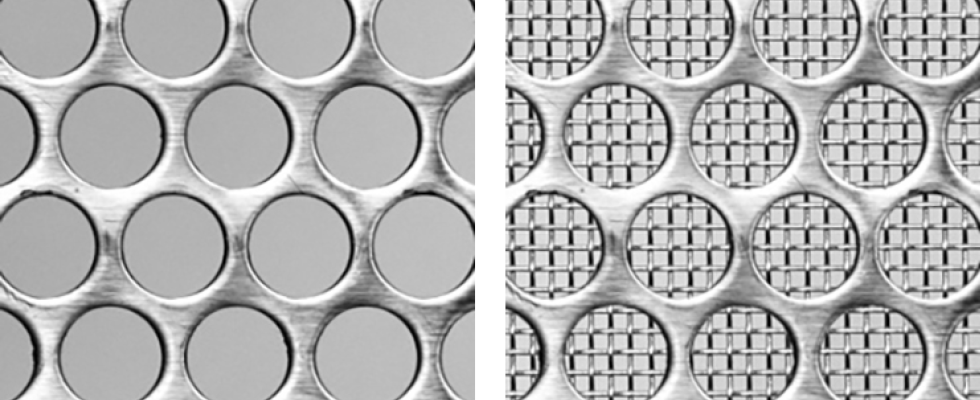
Symptoms & Consequences of a Clogged Strainer
When a strainer becomes clogged, symptoms are often subtle at first. Operators should be trained to recognize the early warning signs:
- Rising differential pressure across the strainer
- Reduced flow rate or pump cavitation
- Noisy or vibrating pumps and valves
- Increased energy consumption
- Unscheduled shutdowns or equipment alarms
Ignoring the early warning signs of a clogged strainer can lead to major consequences. Pumps may overheat or fail, valves may seize and filtration or treatment stages may be compromised. In extreme cases, plant shutdowns or environmental discharge violations can occur.
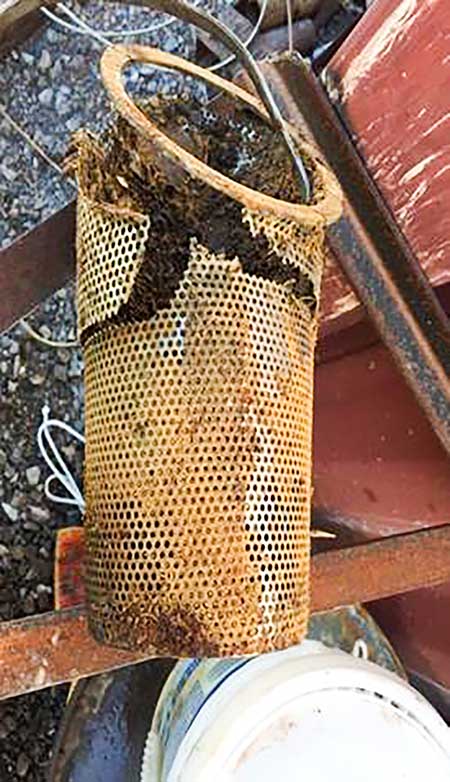
Structured Troubleshooting
A systematic troubleshooting process can quickly identify the cause of a clog and guide corrective action:
- Check differential pressure: Install pressure gauges before and after the strainer. A rise in differential pressure beyond design thresholds indicates a clog is forming. Typically, 10-12 psi discharge pressure and 4 psi suction pressure drop baskets must be cleaned. It is not recommended to allow differential pressure to exceed 20 psi. Factors such as viscosity, specific gravity and mesh lining size all influence pressure drop through the unit, and they must be taken into account.
- Inspect the strainer basket or screen: Isolate the strainer and remove the basket or screen. Visually inspect for debris type, corrosion or deformation. This can offer clues about the nature of the clog—whether it is organic, fibrous, mineral or a combination of these. Soft, gummy materials like tars and resins are more difficult to remove and clog baskets more quickly than hard crystalline materials.
- Analyze the debris: Collect a sample of the material causing the clog. If fibers dominate, the source might be packaging or textiles. Heavy sludge may indicate the accumulation of process waste. Use this to refine mesh size or recommend upstream screening.
- Review maintenance logs: Determine how frequently the strainer has been cleaned. Check if clogging coincides with process changes, chemical additions or seasonal variations.
- Evaluate flow conditions: Facilities can examine the flow rates to see when strainers are clogging by installing flow meters or data loggers to capture events that could be overwhelming the strainer.
- Inspect for mechanical or installation issues: Check for damaged screens, improper seals and incorrect strainer orientation. Ensure that support structures are robust enough to prevent undue stress on the unit. Determine whether the line flow can be interrupted for regular basket or screen cleaning.

Solutions & Preventive Measures
To minimize clogging, consider:
- Installing a duplex strainer system: Even the smallest shutdown can impact productivity. Duplex strainers provide a similar level of straining as a single strainer but do not require the system to be shut down for cleaning. They allow maintenance on one side while the other remains in operation. This ensures continuous flow and eliminates downtime during cleaning.
- Upgrading to a self-cleaning strainer: Systems that cannot accommodate duplex strainers can be equipped with a self-cleaning strainer. It provides a continuous filtration without the need for manual intervention. The system utilizes flush valves to remove contaminants automatically, and the filter is cleaned using a backwash system to dislodge debris. Periodic maintenance is still warranted to ensure they perform effectively.
- Adding prefiltration or debris removal upstream: By adding bar screens, sedimentation tanks or hydrocyclones, the facilities can reduce the load on strainers by capturing large or heavy solids early in the process.
- Improving on mesh size and basket design: Reevaluate the balance between protection and flow. For sticky or fibrous materials, wedge wire baskets with appropriate open area and support ribs reduce clogging. The baskets can also withstand full line pressure when clogged. Particle retention is directly related to the amount of surface area available on the straining element. In cylindrical elements, the accumulation pattern can sometimes cause the outlet side of the strainer to clog quickly, resulting in an increase in pressure drop. Pleated straining elements can expand the straining surface area and uniformly disperse the particles. This alleviates buildup and typical pressure loss.
- Utilizing monitoring and alert systems: Installing sensors monitoring differential pressure can ensure timely interventions before clogging leads to failures. They can be set to trigger alerts and cleaning cycles.
- Implementing maintenance procedures: Create standard operating procedures (SOPs) that include the frequency, inspection points and logging requirements for cleaning. A team member should be responsible for maintaining the records.
- Using compatible cleaning chemicals: In cases of scaling or biofouling, periodic chemical cleaning with appropriate solutions can restore flow capacity without mechanical abrasion.
- Providing staff training: Failures can be prevented by ensuring operators and maintenance personnel receive regular training on identifying and addressing minor symptoms as they occur.
Strainers act as the first line of defense and play a significant role in industrial wastewater applications. It is not just a maintenance hassle when they clog; it can also lead to serious operational setbacks if ignored or delayed.
By implementing a troubleshooting process, a well-designed system and regular maintenance schedules, facilities can reduce the risk of clogs and extend the equipment’s lifespan. Whether a user is dealing with sludge, fibers, scale or harsh chemicals, there is a solution for each challenge.
For more on clogging, visit pumpsandsystems.com/tags/clogging.
